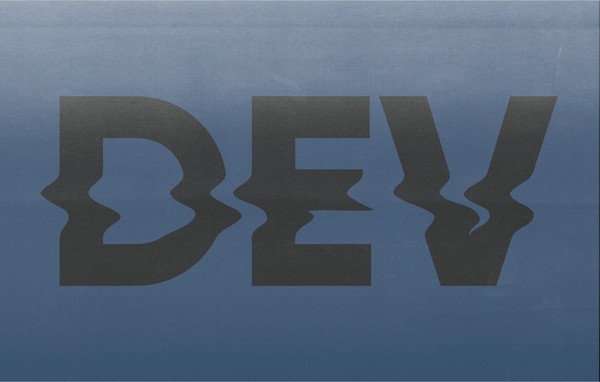What's the JAMstack?
As a front-end developer in 2020, it is time that I fulfill the FEDeral mandate that I publish words regarding the JAMStack. If you follow too many developers on Twitter, it’s likely you’ve heard about the Next Big Thing in web development, but I’d like to put this trend (fad? movement?) into context to better understand what’s truly new about this approach and whether it’s worth using.

Stacks
What even is a stack? You may have heard the term “full-stack developer” and know it refers to someone who does both frontend and backend work, but what is the actual stack? A stack — in the web development world — describes the combination of tools being used to host, serve and render a web project. Traditionally it has four components: an operating system, a server, a database and a programming or scripting language.
Let’s look at a couple notable stacks in recent history.
LAMP Stack
The LAMP Stack comprises Linux, Apache, MySQL and PHP. This is the stack of the early 2000s, and due to its ubiquity it will be around for many years to come. Notable LAMP sites — include Facebook (which has since migrated away), Wikipedia (technically using MariaDB rather than MysQL, for the record) and Yahoo (remember Yahoo?). Most importantly, though, is Wordpress, which powers something like thirty percent of the web and is almost certainly the biggest reason for the average person to build a LAMP stack site in 2020. Because of its history and popularity, though, there is a huge community of developers with LAMP knowledge, and it’s very easy to find affordable hosting from almost any provider.
Ruby on Rails
As you may have noticed from the lack of an acronym, this is not a stack per se, but it is a highly opinionated web framework that became a popular alternative to the LAMP stack architecture in the mid-to-late 2000s. It is database agnostic, so you could still use a MySQL server, but Rails itself generates models, controllers, tests, database migrations, etc. and famously enforces the Rails method of application building. Github is a notable example of a Rails site. To this day, if a company is building a monolithic server-based website, it will likely choose either Rails or a framework it’s inspired, like Laravel for PHP.
MEAN Stack
Arguably the JAMstack of 2014, the MEAN Stack comprises MongoDB, Express.js, AngularJS, and Node.js. As is apparent from all those suffixes, this stack is JavaScript all the way down. The advent of Node.js, a Javascript environment that allows the language to be used anywhere, not just the browser, opened the door for a new era of web development where the full stack could be written in one language. Innovations were being made on the backend with NoSQL databases like Mongo, and the Javascript framework wars were beginning with Google’s Angular and Facebook’s React. (At the time, Angular had the edge. Since then, the frontend community has largely unified around React as the framework of choice, which contributed to the decline in popularity of the MEAN Stack.)
Single Page Applications
This is very much not a stack but feels worth mentioning as it’s a trend that feels transitional between the MEAN Stack and the JAMstack. With the popularity of React and its tool Create React App, as well as libraries like React Router, a client-side routing tool, many developers began creating sites that were completely client-side: a single index.html with a React application container that simulates a multi-page application without any server-calls or page changes. But while this is useful for interactive web applications like drawing tools, for more traditional websites it meant abandoning server benefits like SEO and resulted in extremely large Javascript bundle sizes.
Back to the JAMstack
From a stack perspective, the OS has been replaced by a CDN, the web server has been replaced by serverless functions, the database is optional, and JavaScript is the only required language. Like Ruby on Rails, this approach relies one one tool: the static site generator.
Static Site Generators
A static site generator is a tool that pre-renders web pages from a combination of markup and Javascript and will usually also perform code-splitting and other optimizations on the codebase. By pre-rendering the pages, the files can be served statically from CDNs rather than having to be rendered at runtime by a web server.
There are many tools available, depending on your language of choice. For true versatility, use something like Eleventy to take any type of markup — Markdown, Liquid, plain old HTML — and generate static pages without the need for a Javascript framework. Similar tools are Hugo (built in Go) and Jekyll (built in Ruby; powers Github Pages).
For those who have a Javascript framework of choice, each big framework has its own choices for SSGs. For React, Gatsby is a popular choice for generating static pages from a React application and has an ecosystem of themes and plugins to choose from. NextJS can do the same but is notably more than just an SSG. On a page-by-page basis, it can either generate a static page or server-render it, providing extra options for those who want the speed and simplicity of static pages without sacrificing the benefits of server-rendering for pages that need it.
APIs
The core concept behind JAMstack is that almost any functionality you would need from a server has an API available already. Need CRUD for your MySQL database? Use Hasura to generate a GraphQL endpoint for it. Authentication? Use Auth0. CMS? Well, that’s a whole other blog post, but let’s just say you have options. These are usually referred to as "headless" services, as they have been decoupled from the front-end.
For anything else, use Netlify’s serverless functions or NextJS’s API routes to spin up a little endpoint that handles what you need on the fly.
Benefits and Trade Offs
So should you start building all your sites with the JAMstack? As always, It Depends. Let’s take a look at some of the key decision points.
Speed
Static sites are extremely fast. Pages. Unfortunately, they can be very slow to build. If a site has thousands of pages, an SSG generally has to generate every single one of those pages every time the site is built. This can take a long time and severely hold up deployments. Fortunately, features like NextJS’s incremental static page regeneration allows for a hybrid approach where some pages can be generated at build time and the rest aren’t generated until they’re requested.
Some may also argue that static page speeds can be replicated by simply putting Cloudflare’s CDN in front of a Wordpress site, for example, but it’s nice that the speed is there out of the box rather than requiring the setup of a CDN or caching solution on top of the site build.
Security
A common complaint about Wordpress is that they are vulnerable to hacking attempts. This is not so much a problem with Wordpress itself as it is with the fact so many websites are built with it. But the reality is that because JAMstack sites don’t have a server, there isn’t really anything to hack into. And because data fetching can be done in serverless functions, you can also avoid exposing API tokens like you might in a fully client-side site.
On the other hand, you have to put a lot of trust in the services you’re relying on, especially for e-commerce, so it’s important to vet all of your APIs and not rely on the lack of a server for solving all of your security problems.
Developer Experience
This is arguably one of the largest benefits of the JAMstack. Static site generators generally have great build tools that enable features like fast refresh, code splitting and ready-made development environments. There is generally very little setup required to get a project started, and libraries, APIs and build tools can be added as needed, if needed. Frameworks like NextJS will handle things like Webpack and Babel configurations, routing, and enforcing best practices for front-end development, freeing up developers to Just Write Code. The only risk here is getting greedy and simply writing too much of it! It’s tempting to use every library out there and end up serving way too much Javascript. But when used responsibly, you can painlessly create great front-end experiences.
Conclusion
Monolithic approaches like Wordpress, Ruby on Rails or Laravel are still extremely useful for developers or teams with a need for fully custom backends or simply want to use a tried-and-true approach with endless resources and hosting options. For developers who want to quickly spin up fully custom marketing sites, ecommerce shops and blogs to deliver rich frontend experiences without needing to build custom servers, the JAMstack is an exciting new methodology that provides great experiences for both developers and users.
Related Posts
Component-Based Web Design
By:Morgan Plappert on 8/9/2024
Designers and developers are always looking for ways to make handoff easier, collaboration more seamless and our processes better aligned. Automation, consistency and efficiency, without compromising creativity. It’s a constant battle and often times, a balancing act.
Read More »Using React and Redux to build the Kentucky Performing Arts ticketing experience
By: Mark Biek on 1/14/2022
When planning the KPA ticketing app, the first big decision was deciding which technology stack to use _______ Given the complex and highly-interactive design, we needed something that was going to be developer-friendly while letting us build an application that was highly responsive to user interactions. Nothing’s more frustrating than a slow user interface! VIA has mostly standardized on ReactJS for smaller interactive user experiences as well as single-page web applications so it seemed like a great fit, even though the ticketing app is just a small (but critical!) piece of a much larger site.
Read More »

